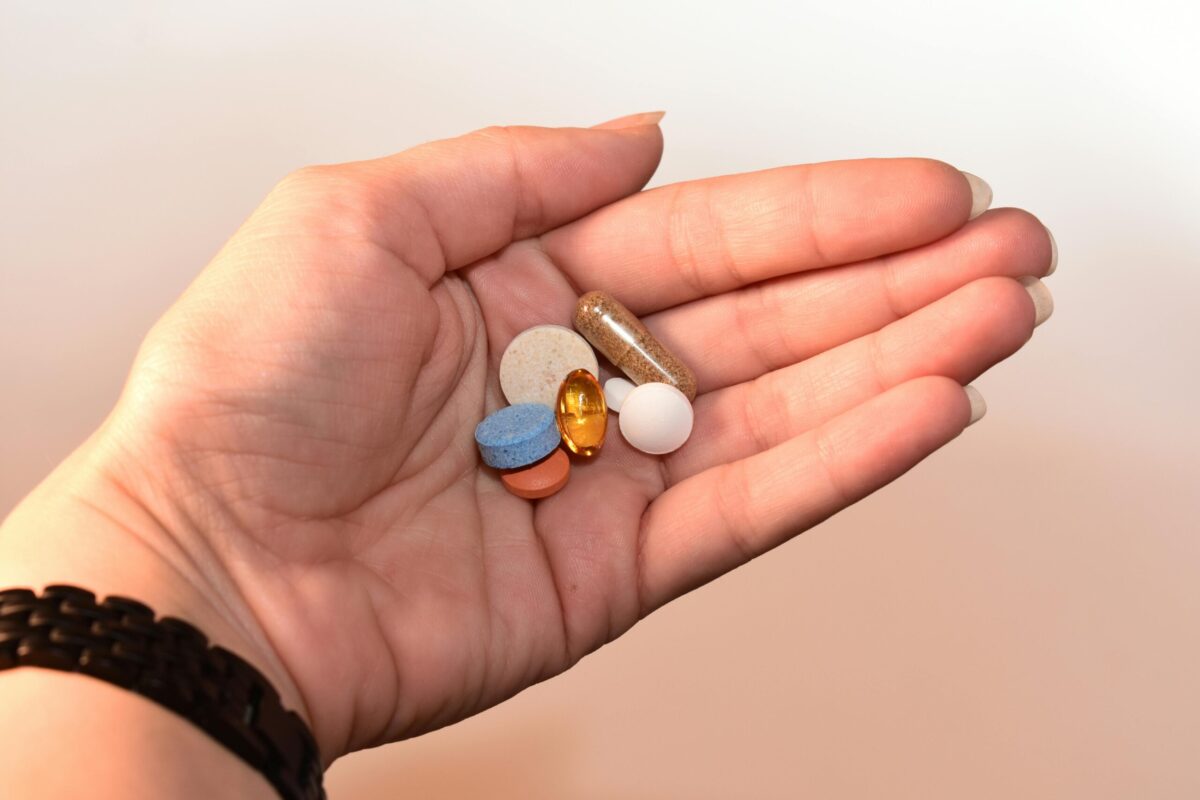In recent years, wellness drinks have become a booming industry, with many products marketed as “natural” alternatives to alcohol or stimulants. One of the fastest-growing in popularity is the Feel Free drink, a blend of botanicals promoted for its relaxing and mood-lifting effects. At first glance, this drink seems to offer a safer option for people looking to cut back on alcohol, manage social anxiety, or boost focus without traditional stimulants. But for individuals in recovery from substance use disorders, the line between “natural relief” and relapse risk can blur quickly. Consulting a Massachusetts mental health center can help ensure that any new approach to relaxation or mood management supports sobriety safely, rather than unintentionally creating a relapse pathway.
What Is the Feel Free Drink
The Feel Free drink is a small, concentrated tonic sold in bottles or cans, marketed as a plant-based alternative to alcohol and energy drinks. According to its makers, the product can:
- Reduce stress and help you relax
- Make social situations more comfortable
- Improve focus and mood support
What draws many people to this drink because it’s considered a “functional beverage.” This means it can lift your spirits or boost your performance without the downsides of hangovers from alcohol or the jitters that come from too much caffeine. It’s especially popular among those trying to lead a sober-curious lifestyle or those looking for a substitute for their usual evening drinks.

What Is Inside the Feel Free Drink
There are two main Feel Free drink ingredients: kava and kratom. Both are psychoactive plants with long histories of traditional use, but they also carry well-documented risks that make them controversial in medical and recovery settings.
Kava is a root that has been used in South Pacific cultures to help people relax and reduce anxiety. It can make you feel calm and slightly happy, which is why some people look for it as an alternative to alcohol. However, there are concerns about using kava too much or for a long time, as it has been linked to serious liver problems, which have led some countries to ban or limit kava products. While not everyone will have these issues, the risks are significant enough that health experts recommend being cautious.
Kratom can affect the brain in different ways, depending on how much you take. At low doses, it can make you feel more energetic and focused. At higher doses, it can help you relax and relieve pain, similarly to opioids. This makes kratom appealing for those trying to move away from alcohol, painkillers, or stimulants, but it also raises health concerns, as regular use of kratom can lead to dependence.
When you combine kava and kratom in the same drink, the risks multiply. Mixing psychoactive ingredients can make both the positive and negative effects stronger, which can lead to more side effects and health issues. Additionally, because these drinks are sold as supplements, they don’t have to meet the same safety and testing standards as medicines. This means there could be problems with purity, misleading information on labels, or differences in how strong each batch is.
Potential Benefits People Report
Many people talk about the positive effects they experience from consuming the Feel Free drink, such as:
- Feeling less stressed after a tough day
- Being more comfortable in social situations
- Using it as an alternative to drinking alcohol
These short-term benefits might seem attractive, especially for those trying to stay sober. But it’s important to note that most of these claims are based on personal stories rather than scientific research. There isn’t a lot of clinical evidence to back them up, and focusing on these perceived benefits can sometimes overlook early signs of developing a dependence on it.
Safety Concerns for People in Recovery
For those in recovery, there are a few Feel Free drink risks to consider:
- Cross-Addiction Concerns: For individuals with a history of using alcohol or drugs, switching from one substance to another can be risky. Even if the new substance seems less harmful, using it to manage feelings can lead to old habits resurfacing.
- Withdrawal Worries: People who use kratom regularly might experience withdrawal symptoms similar to mild opioid withdrawal. This can trigger cravings and make it harder to stay sober for those in recovery.
- Liver Health Risks: Both kava and kratom have been linked to liver problems in some cases. Mixing these substances can put extra stress on the liver, especially when taken with prescription medications.
- Mental Health Effects: Rather than helping to improve mood, some users find that regular use can lead to increased anxiety, mood swings, and trouble sleeping. This can make existing mental health issues worse.
- Mixing Dangers: Combining Feel Free with alcohol, certain opioids, stimulants, or mood stabilizers can increase the risk of sedation, cause imbalances in serotonin levels, and lead to serious interactions.
Daily Use and Habit Formation
Drinking Feel Free “once in a while” may not seem concerning. But patterns matter. Certain red flags can signal that use is becoming problematic, like:
- Escalating use: needing more bottles per day to feel the same effects
- Chasing effects: drinking it earlier or more frequently for relief
- Avoiding withdrawal: using to manage irritability, fatigue, or anxiety
- Secrecy: hiding use from friends, family, or recovery supports
It’s important to know when to take a break, reduce use, or ask a doctor for help. If you find it hard to get through a day without drinking, experience withdrawal symptoms when trying to cut back, or notice concerning changes in your health, it’s a good idea to talk to a medical professional. Doctors can create safe plans for reducing use, keep an eye on liver health, and provide support to help avoid going back to other substances. For those in recovery, getting a treatment team involved early on can help prevent a habit from turning into a new addiction.

Who Should Avoid The Feel Free Drink
Certain groups of individuals are at a significantly higher risk for adverse effects or complications due to various health conditions and circumstances. These groups include:
- Individuals who are beginning their recovery from addiction or have previously struggled with substance abuse
- Anyone who has liver problems
- Pregnant or breastfeeding women
- People taking medications that influence mood or sleep, or those receiving treatment that helps with addiction
MAT and Co-Occurring Care Considerations
For people taking medication for addiction recovery or mental health issues, using kratom can increase risks. Here are some important points to consider:
- If you’re using buprenorphine or methadone, kratom might interfere with your treatment and make it less effective.
- If you’re on naltrexone, kratom could reduce how well your medication works.
- Combining kratom with antidepressants or antipsychotic medications can increase the risk of serious side effects, like mood swings or serotonin syndrome, which can be dangerous.
- Using kratom along with benzodiazepines or seizure medications can lead to excessive drowsiness and breathing problems.
It’s important to note that experimenting with kratom during recovery can disrupt your progress. Instead, consider safer options like counseling, peer support groups, and non-addictive ways to manage symptoms that your healthcare provider recommends.
Harm Reduction If Someone Chooses To Try It
If you’re thinking about trying something new that might be a little risky, it’s really important to think about safety first. Here are some simple tips to help you stay safe:
- Start small: Begin with a low amount, and don’t take a lot all at once.
- Avoid mixing: Don’t combine it with alcohol or other drugs, especially sedatives or stimulants.
- Set limits: Decide how often and how much you’ll do, and stick to these limits.
- Pay attention to your body: Look out for warning signs like yellowing skin, extreme tiredness, nausea, or mood swings.
- Know when to stop: If you notice any withdrawal symptoms, stop right away and get medical help.
Safer Alternatives for Stress Relief and Social Ease
Instead of turning to drinks like Feel Free, there are healthier ways to manage stress and connect socially without risking relapse.
Non-intoxicating options like adaptogenic teas without kratom or kava, magnesium glycinate, or L-theanine (with clinician approval) can be great choices. You might also find behavioral supports such as CBT or DBT skills, peer groups, exercise, breathwork, and improving sleep habits helpful for steady relief.
In social settings, try enjoying alcohol-free options like mocktails made without psychoactive botanicals or opt for structured activities. These can make it easier to stay engaged and have a good time without relying on substances.
How To Talk To A Loved One About Feel Free
Talking about worries related to Feel Free drink side effects can be tough, but it helps to bring it up in a friendly way rather than sounding critical. This way, your loved one is more likely to listen and share their thoughts. You might want to ask simple questions about what they enjoy about the drink and how it fits into their goals for feeling better.
Connecting the conversation to things that matter to them, like being healthy, stable, or caring for family, can help them understand the bigger picture. After that, you can suggest some helpful steps, like visiting a doctor, getting checked for substance use, joining a support group, or talking to a counselor. This way of discussing things shows you’re there to help, not to pressure them, and keeps the focus on their health and happiness.

When To Seek Professional Help
It may be time to involve a clinician if you notice:
- Escalating use or needing multiple drinks daily
- Withdrawal symptoms when cutting back
- Mixing with other substances
- Decline in mood or mental health stability
If you notice escalating use, withdrawal symptoms, or worsening mental health, consider contacting mood disorder treatment centers for professional support.
FAQ
Is the Feel Free drink safe in recovery?
Not entirely. While marketed as natural, it carries dependency and interaction risks.
Can the Feel Free drink cause dependence or withdrawal?
Yes, especially because of kratom. Withdrawal symptoms may resemble mild opioid withdrawal.
Is it safer than alcohol for someone with addiction history?
Not necessarily. While it avoids alcohol’s toxicity, it can still trigger relapse pathways.
Will Feel Free interact with my medications?
It may. Interactions with antidepressants, benzodiazepines, opioids, and MAT medications are possible.
How do I know if my use is becoming a problem?
Red flags include needing higher doses, hiding use, and feeling unable to go without it.
Making Informed Choices in Recovery
The Feel Free drink is promoted as a clean, plant-based option for those looking to avoid alcohol. However, for people recovering from addiction, it can pose significant risks. This drink contains kava and kratom, which can affect the liver, create a dependency, and even lead to withdrawal symptoms.
While some people might notice short-term positive effects, these can sometimes hide the beginnings of a new addiction. If you’re thinking about trying it, it’s important to have open discussions with healthcare professionals and to consider smart ways to minimize harm. Ultimately, for anyone in recovery, it’s best to avoid products that can make the line between wellness and relapse blurry.



